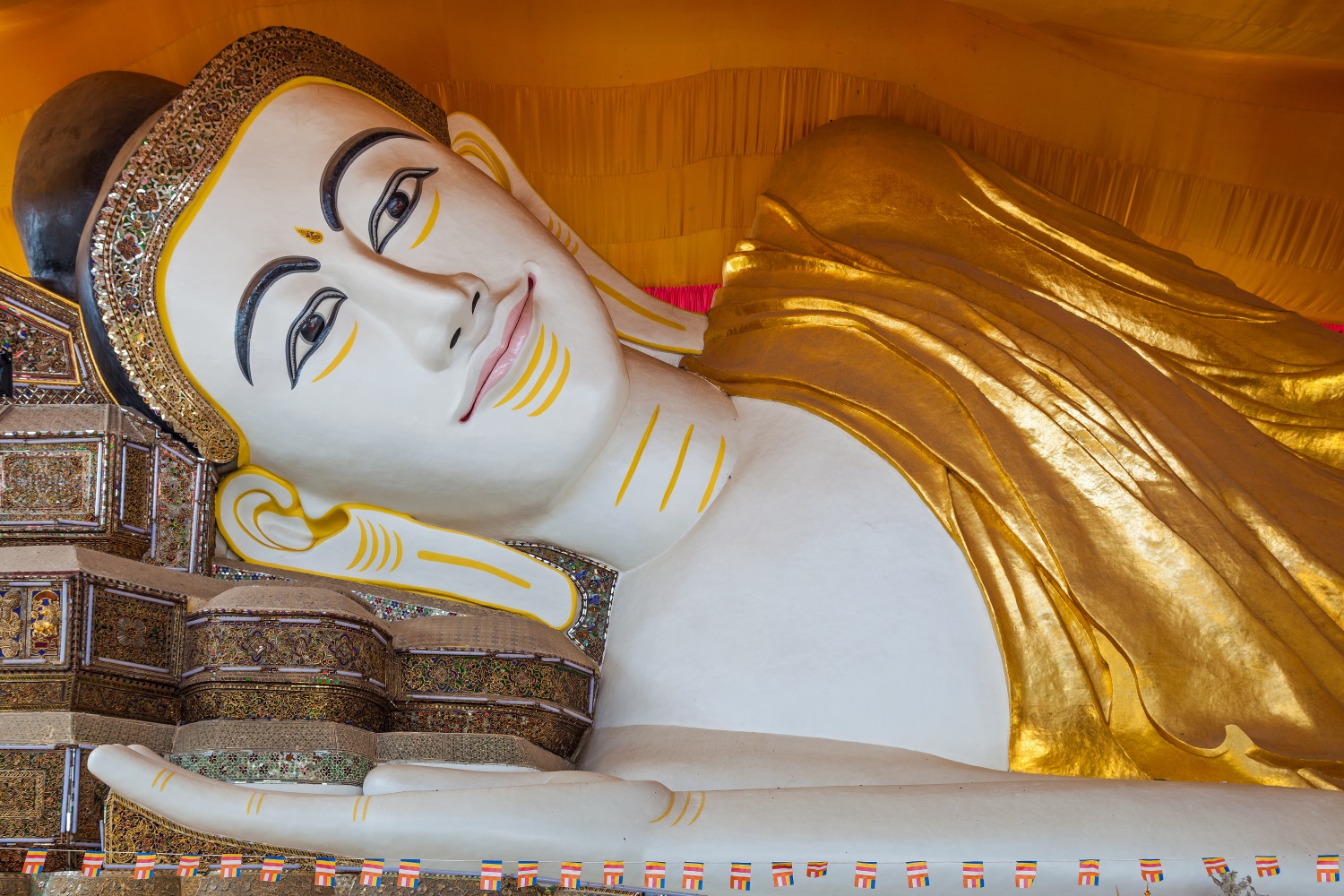With so many impressive Buddhist sites to choose from, here are just a few that are well worth planning your Myanmar trip around.
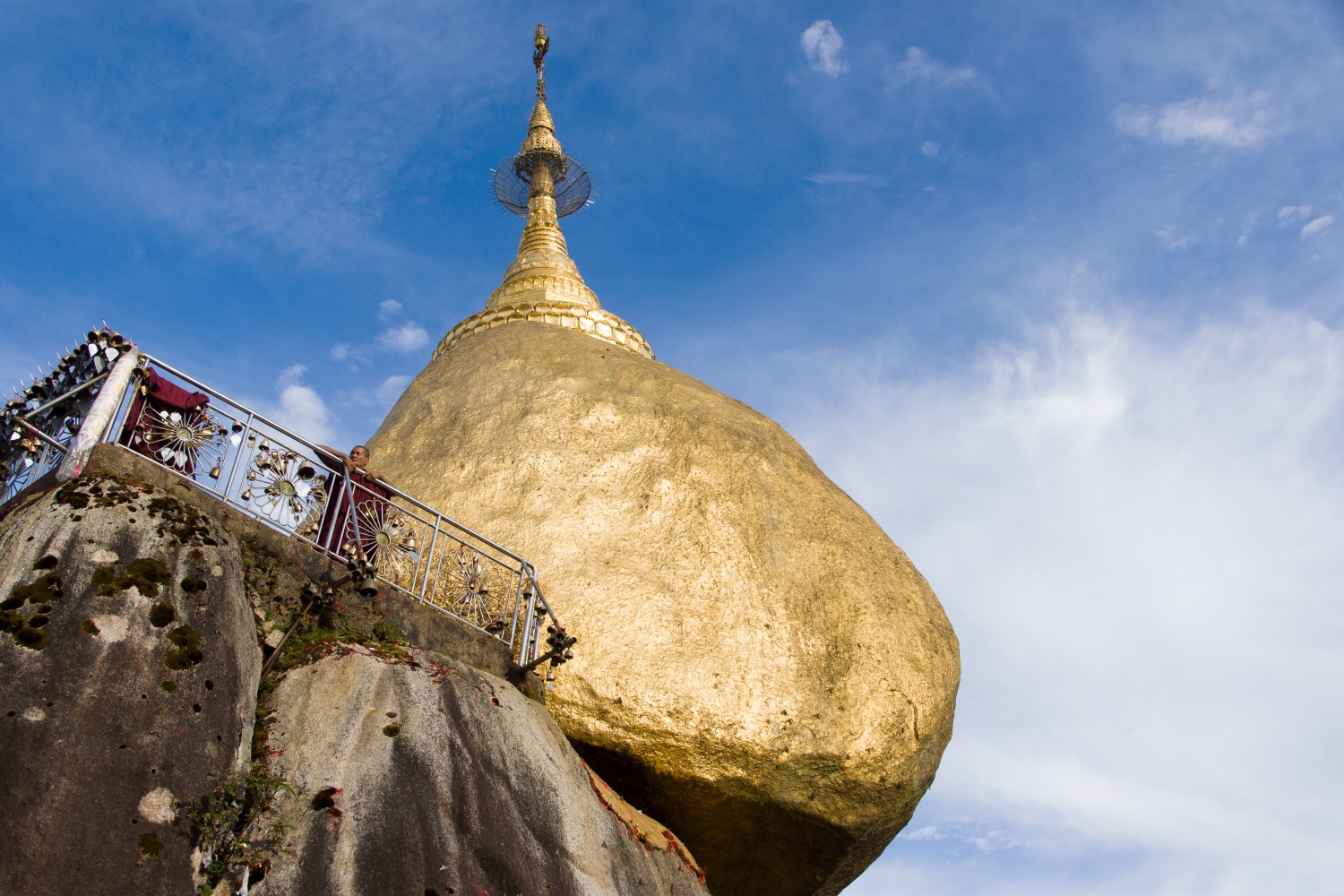
The very symbol of Myanmar, the gold-laden spire, or zedi, of Shwedagon Paya soars almost 100m above Yangon and is visible from most parts of the city. This is one of the holiest Buddhist sites anywhere in the world – the locals believe a pagoda has stood here for over 2500 years – built originally to house a handful of hairs given by the Buddha Gautama to two Burmese brothers.
There are other stupas within the complex, as well as myriad altars and shrines. Equally fascinating, though, is observing the worshippers who flock here at all times of the day and night.
Visit the Shwedagon in the cool of dawn for a more tranquil experience. Otherwise, join the crowds who gather here just before dusk, when the Shwedagon shimmers in the setting sun. The north gate and northwest corner of the complex are prime spots for photos.
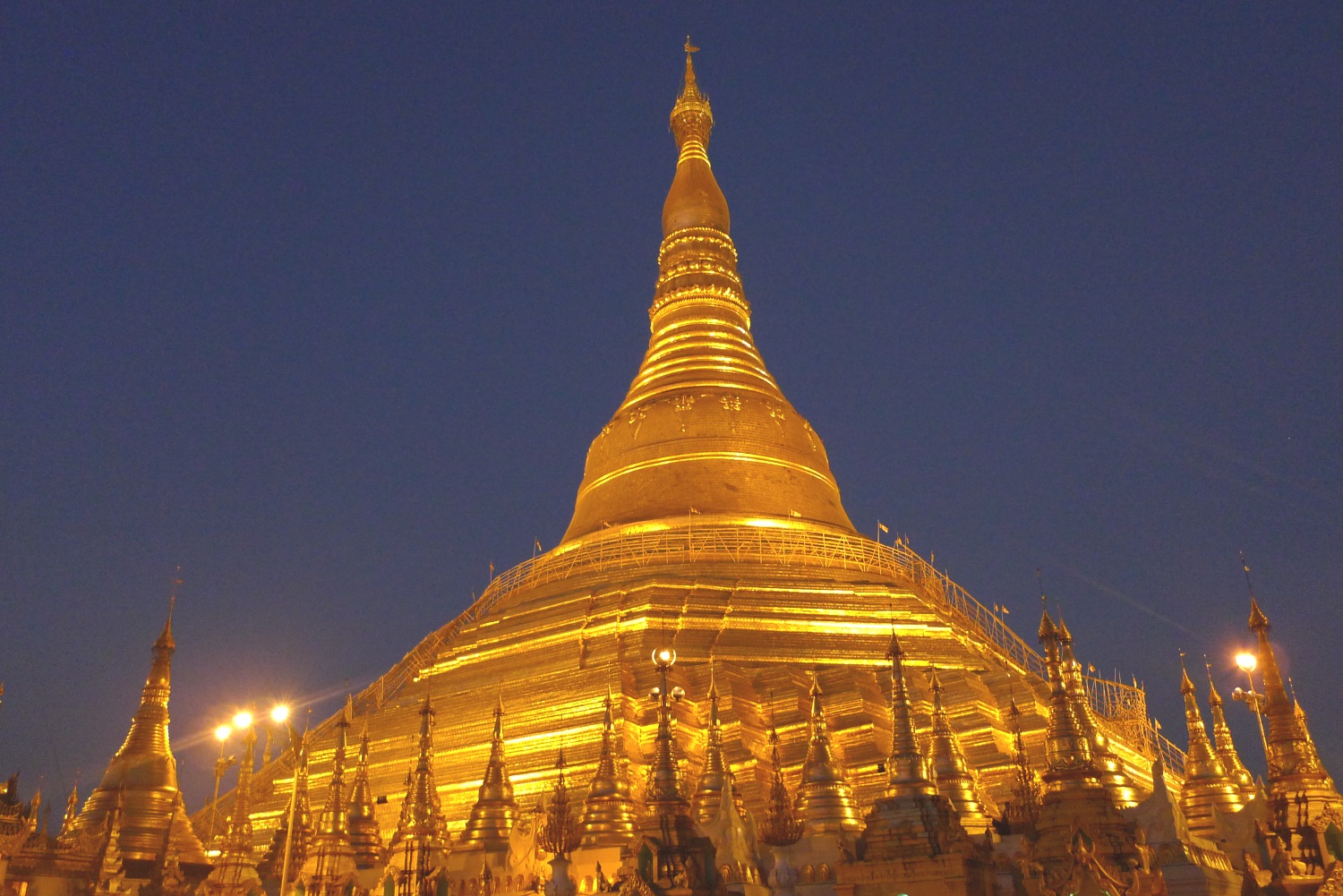
Perched precariously atop a ridge, the golden rock of Mt Kyaiktiyo in southeast Myanmar is one of the country’s most revered pilgrimage spots. It’s also the most eye catching: a huge gilded boulder topped by a small stupa that looks like it could topple down the mountainside at any moment.
There are stunning views from Mt Kyaiktiyo when the weather is right, as well as other stupas to explore. But only men are allowed to cross the small bridge that separates Mt Kyaiktiyo’s summit from the rock to pray and attach gold-leaf squares to the boulder.
The views from Mt Kyaiktiyo are best from November to March, which is when pilgrims come here, staying up all night to chant and meditate in a heady atmosphere. During the rainy season (June to October) mist and cloud often shroud the summit.
Over 3000 temples are scattered across the Bagan plain. They are the result of a frenzied wave of pagoda building that lasted from the middle of the 11th century to the end of the 13th century, as Bagan’s kings sought to demonstrate their devotion to Buddhism.
Some sites, such as the perfectly proportioned Ananda Pahto, are still working temples. Others are simply the remains of once grand stupas.
Some of the temples offer fantastic sunset views. Try the pyramid-like Shwesandaw Paya, or the steep Buledi.
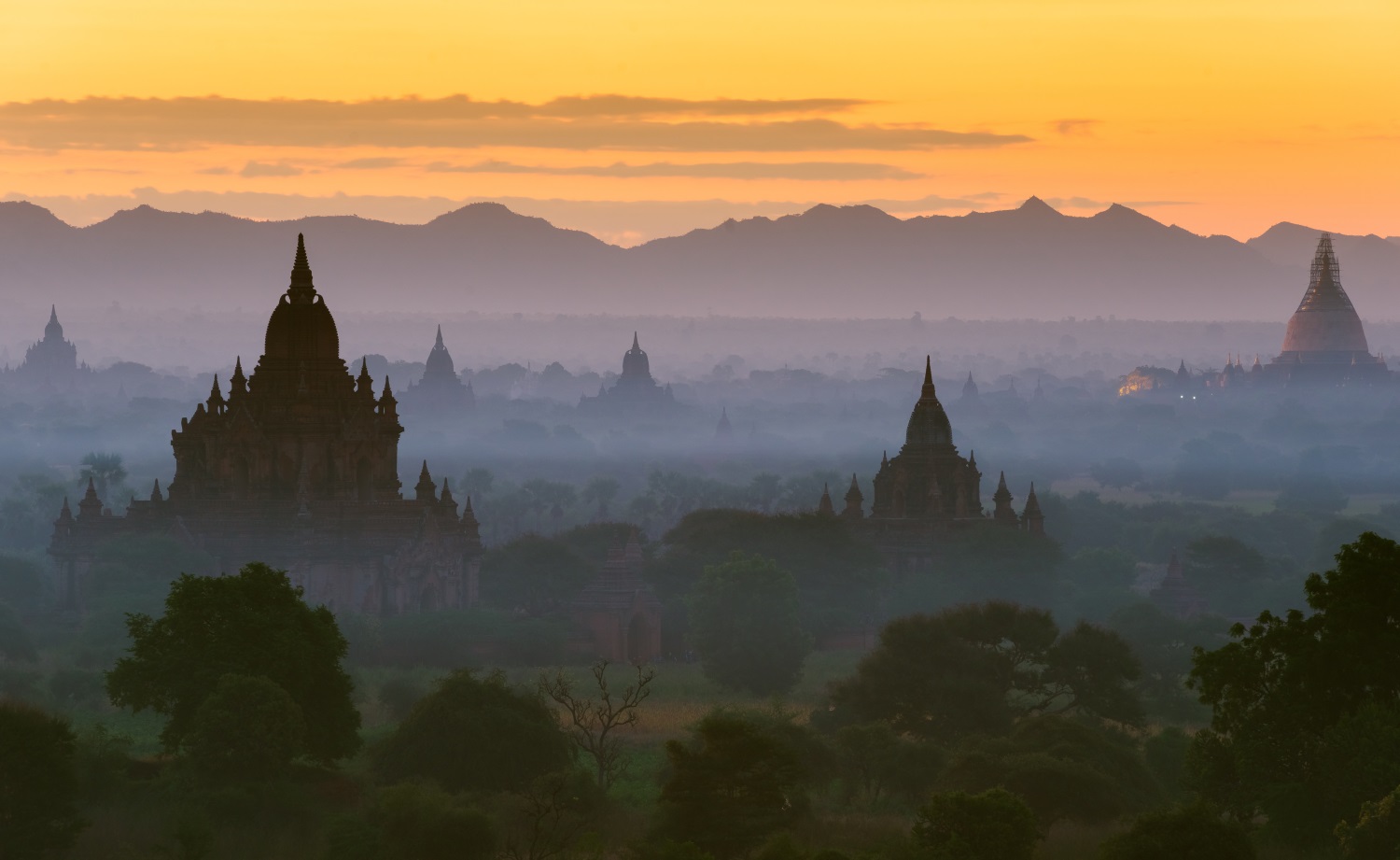
Deep in remote Rakhine (Rakhaing) State in western Myanmar, Mrauk U (pronouced ‘mraw-oo’) is the least visited of all the country’s major Buddhist sites. That means you’ll often have the brooding, almost fortress-like pagodas here to yourself.
Made of stone, rather than brick, and darkened by age and weather, most of the stupas, former monasteries and temples date from the 15th and 16th centuries. This was a time when Mrauk U was the capital of Rakhine and one of the richest cities in Asia thanks to its trade with the Middle East, Portugal and Spain.
Don’t miss the stupa-laden Shittaung Paya and its 80,000 Buddha images; the towering Ratanabon Paya, which is surrounded by several, smaller stupas; or the hulking Kothaung Paya, the largest temple in Mrauk U.
Note that some countries still advise their citizens against travel to Rakhine State, following sectarian violence in 2012 (though Mrauk U was not affected). Check the latest security information before you visit.
Both Bagan and Mrauk U are spread-out sites that you could spend days exploring. Consider hiring a horse cart, as the drivers are knowledgeable about the temples. Carts cost 20,000 kyat (US$15) per day. Or else, hire a bike (1500 to 2000 kyat per day) and peddle around. Dawn and sunset offer spectacular views. It gets very hot in the middle of the day – make sure to bring a hat, sunscreen and plenty of water.
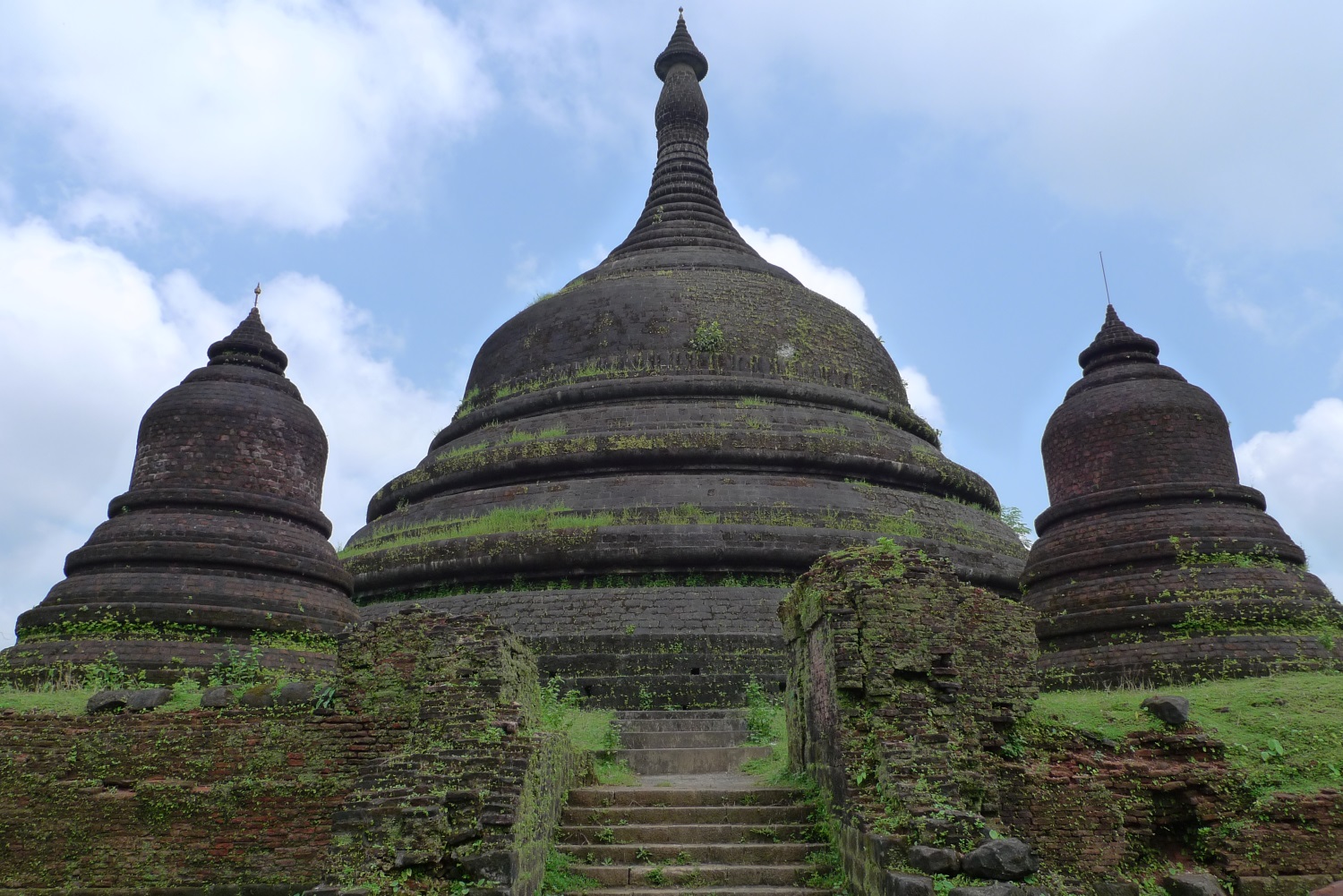
Bago doesn’t look like much. But this was once the capital of southern Myanmar and is still home to some of the finest temples in the country, as well as many important monasteries.
Rising above Bago is Shwemawdaw Paya, taller than the Shwedagon and stunning at night. Equally impressive is the giant, reclining Shwethalyaung Buddha, which dates back to the 10th century.
At Kya Kha Wain Kyaung, one of the largest monasteries in Myanmar, you can watch the 500-plus monks filing out in search of alms in the early morning. Or visit the resident python at the Snake Monastery, a reptile reputed to be 127 years old.
Bago is 80km north of Yangon and can easily be visited from there as a day trip. Once in town, hire a trishaw or motorcycle taxi to transport you around – expect to pay 7000 kyat (about US$5) per day. The annual Pagoda Festival, held in March or April, is a great time to visit.
